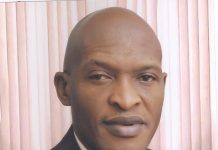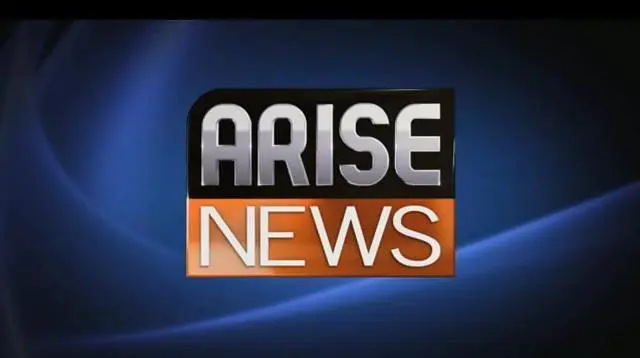Operators in the nation’s manufacturing sector saw their combined debts to Nigerian banks rise from N4.09tn in December 2021to N4.54tn in June 2022, according to the Central Bank of Nigeria’s Sectoral Analysis of Deposit Money Banks’ Credit.
This is as they borrowed the sum of N450bn between December 2021 and June 2022. With the increase in debts, stakeholders in the manufacturing sector have maintained that the current double-digit lending rate is unfavourable as it has a direct impact on the cost of production and the competitiveness of the sector.
The Governor of the Central Bank of Nigeria, Godwin Emefiele, in November 2021, promised to provide single-digit loans to manufacturers of not more 9 per cent.
Speaking at the Nigeria International Partnership Forum in Paris, Emefiele had said, “We want to ensure that the manufacturing sector can access capital at a single-digit rate of not more than nine per cent. It should be easy for you (investors in manufacturing) to access credit at single digit with two years moratorium.”
However, the CBN has failed to keep to this promise as it has increased the benchmark interest rate twice in 2022.
The Monetary Policy Committee of the CBN in July raised the Monetary Policy Rate from 13 per cent to 14 per cent.
This came barely two months after the MPC, during its bi-monthly meeting in May, raised the benchmark interest rate from 11.5 per cent to 13 per cent.
https://26be8a1dbc6e5e91ac311e19b1b23b9f.safeframe.googlesyndication.com/safeframe/1-0-38/html/container.html The MPC had left the MPR unchanged for over two years. However, crippling inflation, worsening purchasing power and their attendant effects on the economy appear to have forced the CBN to effect policy changes.
Speaking shortly after a two-day MPC meeting, the CBN governor argued that a new rate hike was necessary to put the economy on track.
Reacting to this increase, the former President of the National Association of Small Medium Enterprises, Mr Degun Agboade, said that the association was complaining about the old rate before the hike.
“We were complaining of the old percentage of 11 and 12 per cent. Now that they have taken it to 14 per cent. We are in a worse situation. Nothing has improved in terms of infrastructure. In fact, the infrastructure is getting worse. You can’t move on the roads; diesel price has moved up, and there are a whole lot of problems. In the midst of that, you still raised the interest rate? That is adding insult to injury.”
A professor of Economics at Covenant University, Ota, Jonathan Aremu, said the decision of CBN’s MPC reflected an economic theory that stated that for an economy to remain robust, the quantity of money in circulation must reflect the volume of production and consequently the volume of trade/transactions.
He further stated that the CBN would not be able to solve the problem of inflation by merely increasing the cost of borrowing because producers might not have enough money to produce goods and services.
Also speaking, the Deputy-President of the Lagos Chamber of Commerce and Industry, Dr Gabriel Idahosa, criticised the rate hike.
Idahosa said, “Our own economy cannot stand this kind of rate hike, where you have unemployment, inflation going to 20 per cent. Manufacturers are not able to cope with current interest rates because of the cost of production. Diesel alone is sending many of them out of business. If you now add a high-interest rate, it’s not good for businesses that are already suffering from those other issues of inflation and power supply. They are supposed to do it on paper because the monetary policy says if you have inflation, you should increase interest rates.”
Manufacturers borrowed at 21 per cent rate in 2021, according to the Manufacturers Association of Nigeria.
As the sector struggles with rising debt and interest rates, Nigeria’s manufacturing sector recorded a 5.21 per cent growth rate on a year-on-year basis in the second quarter of 2022.
According to the Nigerian Gross Domestic Product Report (Q2 2022) published by the National Bureau of Statistics, this was 33.12 per cent points lower than the figure recorded in the corresponding period of 2021.
The report read in part, “Nominal GDP growth of the Manufacturing sector in the second quarter of 2022 was recorded at 5.21 per cent (year-on-year), 33.12 percentage points lower than the figure recorded in the corresponding period of 2021 (38.33 per cent) and 6.51 percentage points lower than the preceding quarter figure of 11.72 per cent.
“Quarter-on-Quarter, growth of the sector was recorded at -14.50 per cent during the quarter. The contribution of Manufacturing to Nominal GDP in the second quarter of 2022 was 12.97 per cent, lower than the figure recorded in the corresponding period of 2021 at 14.18 per cent and lower than the first quarter of 2022 at 15.06 per cent.”
The NBS report also indicated that real GDP growth in the manufacturing sector in the second quarter of 2022 was 3.00 per cent on a year-on-year basis, lower than the same quarter of 2021 and lower than the preceding quarter by 0.48 percentage points and 2.89 per cent respectively.
The growth rate of the sector on a quarter-on-quarter basis stood at -15.47 per cent. The real contribution to GDP in 2022 second quarter was 8.65 per cent, lower than the 8.69 per cent recorded in the second quarter of 2021 and lower than the 10.20 per cent recorded in the first quarter of 2022.
In its Manufacturing CEOs Confidence Index for the second quarter of the year, the Manufacturers Association of Nigeria said that business conditions in the quarter under review were more challenging than what obtained in the first quarter of the year.
According to the report, which measures changes in pulse of operators and trends in the manufacturing sector quarterly, in 2022 alone, manufacturers have faced a severe foreign exchange scarcity, forcing many firms out of business.












































